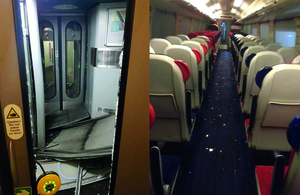Working as a part-time teacher after a career change
Tell us about your background
Before teaching I worked in investment banking. I trained to be a teacher with Now Teach, who support experienced professionals to train as teachers. The opportunity to follow Now Teach’s compressed programme was a major draw to become a teacher. In my former profession, I was able to work flexibly from home, but the culture was that you were in the office. My initial teacher training was at Oasis Shirley Park. During my training year I worked 4 days a week and the school were always very supportive of my part time arrangement.
I then stayed with Oasis Shirley Park for my newly qualified teacher year following the award of my qualified teacher status. I was keen to continue working 4 days a week. The school worked compassionately with me and my department to make sure that it worked for everyone.
What are the personal benefits and challenges for you in working flexibly?
My experience of working flexibly has been fantastic and I love it. I currently work 0.8 full-time equivalent (FTE). Having a day off means I can see my children more, and I can attend more personal and professional events. Ultimately, the biggest benefit so far is that I can be a calmer, better teacher which I think is of great benefit to the students and for my own teaching experience.
The biggest challenge for me is that I do not always have the same day off. It can change year to year.
What are the impacts and challenges of working flexibly on your school?
The biggest issue was timetabling. I worked together with the timetabler and the head of department to think about how my part-time arrangement could work for the school as well as me. We had to plan carefully to make sure that the timetable worked for pupils and other staff members.
We do split classes at Shirley Park, where two or more teachers share a class between them. I can see positives and weaknesses either way of split classes, but so far, I have found they have worked well when managed properly. The pupils do not consider them different from having one designated teacher but regard it as normal.
I share a Year 7 and a Year 8 class with another teacher. I have both classes for one lesson a week. The lead teacher has overall responsibility for the class and is accountable for pupil’s progress. We communicate regularly via email, sharing information about the pupils and their progress in lessons. For more delicate issues, we have face to face meetings.
As well as my teaching role I have been able to take on leadership opportunities. I am now Head of Year 12 and I can do this on a part-time basis. Half the maths department are also part-time, all working on reduced hours.
We have seen that part-time work has become more popular as a result. Our former headteacher who is returning to work following her maternity leave has taken up a 0.8 FTE week. She has told me she was inspired to do it because of the example we have set. Part-time work is now starting to be normalised, rather than it being different.
What advice would you have for others considering flexible working?
Without the opportunity for compressed training, I would not have considered entering the profession. The opportunity to remain part-time has kept me in the profession. I do believe that any school can do it, but it requires a willingness from both sides to make it work. Most people do not know they can ask for it and I would encourage anyone who feels it could improve their professional and personal life to discuss it with their school leadership.

